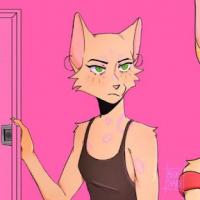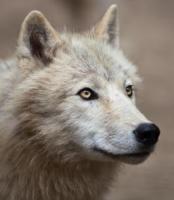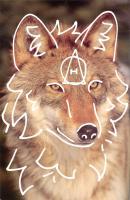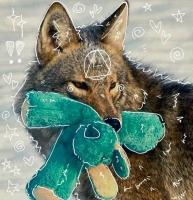| |
| RE: Finding your therian name |
|
Posted in: Introduction to Therianthropy Posted by: WereKitty - 2025-09-22 21:33
|
|
 I don't need a name, as a wild animal I see no reason for it. Wild animals know no bounds, they don't conform to humans' need to catergorise and identify things.
I don't need a name, as a wild animal I see no reason for it. Wild animals know no bounds, they don't conform to humans' need to catergorise and identify things.
I suppose my name of 'Kitty' just so happens to work well enough... I am simply a kitty, untamed and undefined.
And anyway, your theriotype is you. Naming what is essentially just an extension of you really doesn't serve any function, unless it is perhaps just to stick out from the rest and / or make more sense of things for yourself. I guess some people need labels in order to understand things, we all work differently at the end of the day.
|
|
| RE: Finding your therian name |
|
Posted in: Introduction to Therianthropy Posted by: Lupus Ferox - 2025-09-22 20:37
|
|
 To name an animal or a thing, or hell, even a human being, is a means to distinguish one "unit" from another. Like religion, like it or not, or time for that matter, it began with the human need to put things into boxes, to make it easier to separate the one from the other and to facilitate access to the world around them. I'm a wolf, so according to your beliefs, I ought to have a name since all animals have them. Now tell me something, who gave me mine?
To name an animal or a thing, or hell, even a human being, is a means to distinguish one "unit" from another. Like religion, like it or not, or time for that matter, it began with the human need to put things into boxes, to make it easier to separate the one from the other and to facilitate access to the world around them. I'm a wolf, so according to your beliefs, I ought to have a name since all animals have them. Now tell me something, who gave me mine?
So no, I don't think I have a therian name. I have a username, but chose this one, not to represent who I am as a wolf, but to distinguish myself from another user so that there exists no confusion. These are human concepts, not animals'.
|
|
| RE: What Makes You Believe /You/ Are Therian? |
|
Posted in: Explanations of Therianthropy Posted by: M8dness - 2025-09-22 14:39
|
|
 It's hard to say exactly what makes me feel this way, but I've always known I wasn't exactly like everyone else. I've always found greater comfort in animals or anything to do with animals. Everytime I played a game, I had to be something to do with animals. Toys? Always animals. Now I realize that maybe I was showing signs of being a therian before I even knew what it was. And as I got older, the traits never really faded. I mean, sure, they were a little more mature, but they were still there. And even now, they're still around, along with some of my traits that do connect to therianthropy. It may not make me 100% sure, but it makes me confident in my identity.
It's hard to say exactly what makes me feel this way, but I've always known I wasn't exactly like everyone else. I've always found greater comfort in animals or anything to do with animals. Everytime I played a game, I had to be something to do with animals. Toys? Always animals. Now I realize that maybe I was showing signs of being a therian before I even knew what it was. And as I got older, the traits never really faded. I mean, sure, they were a little more mature, but they were still there. And even now, they're still around, along with some of my traits that do connect to therianthropy. It may not make me 100% sure, but it makes me confident in my identity.
|
|
| RE: What Makes You Believe /You/ Are Therian? |
|
Posted in: Explanations of Therianthropy Posted by: WereKitty - 2025-09-22 14:28
|
|
 Well, to put it simply, saying ’I am human’ just never felt 100% right. Like, ever.
Well, to put it simply, saying ’I am human’ just never felt 100% right. Like, ever.
I’ve felt feline for as long as I can remember; as a child, I used to act out these feelings constantly, and although I’ve gotten better at controlling my instincts as I’ve gotten older, the feeling still hasn’t left.
I also felt a strong, strong sense of recognition when I’d first discovered therianthropy (although I was initially very skeptical of it). It was like something had finally clicked, I had an explanation for why I behaved in these ways. I can look at the leopard and serval and confidently say ’that is me’ and feel like I mean it. Other than our physical form, there is little to no difference most days between me and them. And whether I have a label or not, this is what I am and I can feel secure in that.
|
|
| RE: What Makes You Believe /You/ Are Therian? |
|
Posted in: Explanations of Therianthropy Posted by: Ashley on paws - 2025-09-21 22:08
|
|
 As of currently, I am still unsure what makes me believe I am a therian. What I believe is that I was born as a coyote, died somehow, which I am unsure of at this time, and was reborn as a human. I also believe that the soul has both an animalistic part of it and a human part of it and that therians are just more in touch with their animalistic side of their soul, which I think is responsible for the shifting aspect of therianthropy. This is the most I can think of right now because I am still learning about things. I will try and update this later when I am more knowledgeable of the spiritual realm and just therianthropy in general.
As of currently, I am still unsure what makes me believe I am a therian. What I believe is that I was born as a coyote, died somehow, which I am unsure of at this time, and was reborn as a human. I also believe that the soul has both an animalistic part of it and a human part of it and that therians are just more in touch with their animalistic side of their soul, which I think is responsible for the shifting aspect of therianthropy. This is the most I can think of right now because I am still learning about things. I will try and update this later when I am more knowledgeable of the spiritual realm and just therianthropy in general.
|
|
|







![[-]](images/collapse.gif)

 I hope you have many wonderful years here!
I hope you have many wonderful years here!  You deserve it!!!!
You deserve it!!!!

